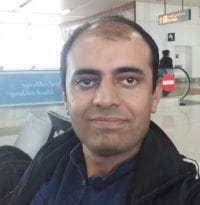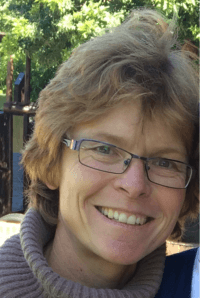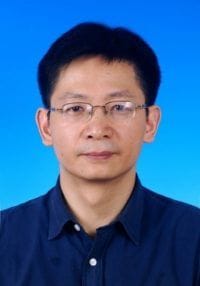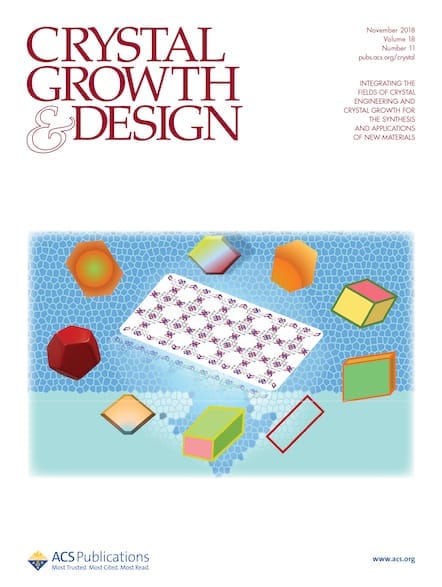Crystal Growth & Design (CG&D) Author Features highlight authors from the journal by topic area. Each featured author has published at least five articles in the journal over the past five years. This month, we met with researchers focused on organic solid state chemistry. Read interview highlights from this month’s featured authors: Dr. Deepak Chopra, […]

Read interview highlights from this month’s featured authors:
Dr. Deepak Chopra, Indian Institute of Science Education and Research Bhopal, India

Tell me about yourself.
I received my bachelor’s in science from Jadavpur University and my integrated Ph.D. from the Solid State and Structural Chemistry Unit, Indian Institute of Science before completing postdoctoral work at the University of Toledo with Professor Alan A. Pinkerton in the area of experimental change density. In 2009, I became an Assistant Professor at Indian Institute of Science Education and Research Bhopal, where I have been working as an Associate Professor since 2015.
Why do you choose to publish your work in Crystal Growth & Design?
Please share your favorite and/or most important article that you published in the journal.
My favorite article that I have published in CG&D was actually my first article. The article was about polymorphism in an indol-4-one derivative and was published in 2005:
Polymorphism in 1-(4-Fluorophenyl)-3,6,6-trimethyl-2- phenyl-1,5,6,7-tetrahydro-4H-indol-4-one: A Subtle Interplay of Weak Intermolecular Interactions
Crystal Growth & Design 2005, 5, 3, 1035–1039
DOI: 10.1021/cg049656k
This article on a systematic understanding of short, directional H-bonds involving organic fluorine from 2014 is an important article to appreciate the perspective on weak H-bonds.
Experimental and Theoretical Characterization of Short H-Bonds with Organic Fluorine in Molecular Crystals
Cryst. Growth Des. 2014, 14, 7, 3155–3168
DOI: 10.1021/cg5004758
What initially attracted you to the field of organic solid state chemistry?
During my early master’s work, I saw how crystallization and crystallography could help me characterize different compounds formed in an organic reaction. I was also deeply fascinated by the work of Professor Joel Bernstein.
What is the most important unsolved problem in your field?
The ability to be able to predict the crystal structures of unknown substances, the existence of polymorphic modifications, and how nucleation and growth processes control the formation of polymorphs. These are real, complex, and challenging problems.
Professor Benita Barton, Nelson Mandela University, South Africa

Tell me about yourself.
I was born in Paarl, South Africa. I obtained a B.Sc. in chemistry and chemical sciences from the University of the Witwatersrand, Johannesburg, and I continued with honors, master’s, and doctoral degrees specializing in organic chemistry, at what is now known as the Nelson Mandela University in the Eastern Cape. I worked at Intramed for a year before I started my career in academia at the Port Elizabeth Technikon (1998-2004). After a forced sojourn to Botswana, I re-entered academia in 2012 at Nelson Mandela University, and I was promoted to Associate Professor in 2018, the position I still hold today.
Why do you choose to publish your work in Crystal Growth & Design?
Please share your favorite and/or most important article that you published in the journal.
N,N’-Bis(9-phenyl-9-thioxanthenyl)ethylenediamine: Highly Selective Host Behavior in the Presence of Xylene and Ethylbenzene Guest Mixtures
Cryst. Growth Des. 2017, 17, 12, 6660–6667
DOI: 10.1021/acs.cgd.7b01284
In this work, we demonstrated that mixtures of the xylene isomers may be separated by employing host-guest chemistry. The thioxanthenyl-derived host compound displayed a very high selectivity for p-xylene (95%) when recrystallized from a mixture of the three isomers. The separation of such compounds by conventional means remains a significant challenge in the chemical industry owing to their very similar physical properties, and hence alternative separation strategies are very attractive.
What initially attracted you to the field of organic solid-state chemistry?
I became interested in the field when obtaining my master’s. My supervisor at the time, Professor Andre Goosen, was approached by the Council for Scientific and Industrial Research (CSIR) in Pretoria to investigate a means of separating the menthol isomers from one another using host-guest chemistry. I have remained in the field ever since!
What is your favorite thing about your job?
Interacting with my undergraduate and postgraduate students is a highlight of my work. It is so satisfying to teach students and watch the ‘light come on’ when they start to really understand the subject matter at hand.
What soft skills should someone in your field have?
Patience, perseverance, and tolerance. These three qualities sum up what is required in my field. Sometimes research doesn’t always go as planned.
Professor Junbo Gong, Tianjin University, China

Tell me about yourself.
In 2001, I obtained my Ph.D. degree from the school of chemical engineering and technology at Tianjin University, where I now serve as a distinguished professor in the National Engineering Research Center of Industrial Crystallization Technology (NERCICT). My team focuses on unravelling the science and technology puzzles inside the process of crystal engineering, and promoting the industrialization of crystallization technology through collaboration with industrial partners.
Why do you choose to publish your work in Crystal Growth & Design?
Please share your favorite and/or most important article that you published in the journal.
My favorite article published in Crystal Growth & Design is “Higher-Order Self-Assembly of Benzoic Acid in Solution” [DOI: 10.1021/acs.cgd.0c01257]. It is a recent nucleation-related study in which we try to uncover the underlying intermolecular interactions, such as hydrogen bonding and aromatic stacking dictating solutes’ self-assembly in solution. We found that it is the hierarchy of intermolecular interactions that determine the self-assembly process of solutes and hence structure of pre-nucleation aggregates. This hierarchy in intermolecular interactions hints crystal nucleation adopting multiple assembly pathways, advancing our current understandings on crystal nucleation.
What initially attracted you to the field of organic solid-state chemistry?
Industrial crystallization is widely used in medicine, food, and other fields, and it plays an important role in the national economy and life. The motivation to help industrial partners solve practical problems, and the interest of crystallization science and technology, attract me to continue exploring the mysteries of crystallization, such as crystal nucleation, a growth mechanism at the molecular level.
What is the most important unsolved problem in your field?
As far as I am concerned, there are two unsolved issues. One is the digitization of the industrial crystallization process: the process simulation, intelligent control, and rational scaling-up are still difficult to realize. The other is crystallization mechanisms at the molecular level, including crystal nucleation, growth, and aggregation behaviors in different environments. These research areas are full of challenges.
Stay tuned for the next round of highlighted authors next quarter by following Crystal Growth & Design on Twitter.
